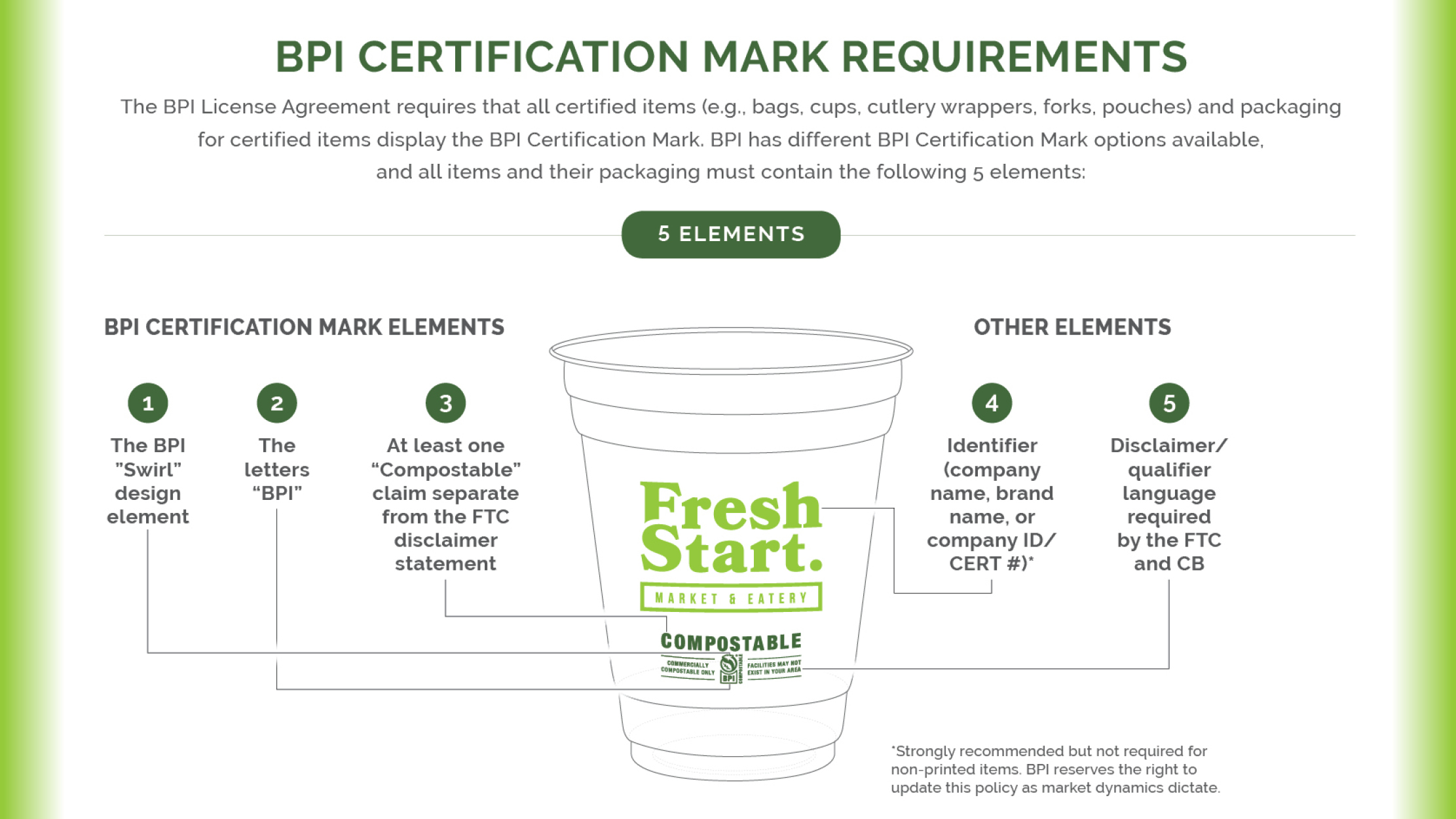Top: BPI Certification Mark requirements released in January. Graphic courtesy BPI
After three years, BPI, in collaboration with its member organizations, completed its artwork compliance review, which was released in January. All BPI-certified products and their packaging must display the BPI Certification Mark, unless the item is categorically agreed to be (temporarily) exempt, based on space constraints or other factors. The mark can be displayed through various methods — such as printing, embossing, etching, and stickers (must be compostable if it’s on-product labeling) — allowing for innovative solutions. “With wider adoption and proliferation of product formats, a lack of uniform labeling has caused multiple composting programs to rollback acceptance to only food scraps, often because consumers cannot distinguish them from non-compostable items,” explains BPI, adding that its purpose as an association is to provide an industry standard. Categories exempt from BPI’s requirements are typically due to a combination of factors in play. The two most common factors, notes BPI, are lack of space on an item and/or the inability to label due to technical limitations, which can sometimes constitute an exemption; and if an item is a low contamination risk because it is unlikely to be confused with a non-compostable item. Three categories currently have exemptions in place for the requirement to display the BPI Certification Mark on all products: resins (including packaging); components (including packaging); and certain product categories, e.g., coffee filters, napkins/towels, 4-oz. and smaller molded fiber portion cups.













